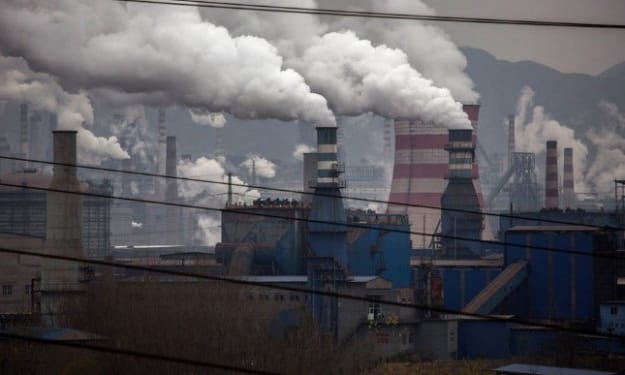
Yosemite is a beautiful national park based in Sierra Nevada. This wasn’t always the case for Yosemite. Evolution throughout the years have drastically changed what we know see one a trip to the south east. 91 million years ago we could trace a trend of volcanic activity in Yosemite. Composition indicated magma was present, but changed over time. Mineral compositions changed with certain magma deposits.” Hornblende and biotite crystallize at higher temperatures than quartz and feldspar, and so during cooling of a magma, these dark minerals generally crystallize earlier than the light-colored ones. This relation suggests that cooling of the magma started at the margins and progressed inward over time.” (Dallas L. Peck, 1987)
Approximately 50 million years ago Yosemite’s landscape was a bunch of rolling hills, broad valleys, and meandering streams. The Merced River went through a wide section of it enriching forestry. 40 million years later the landscape began to uplift and tilt westward accelerating the Merced River flow and caused it to cut deeper into the valley. Temperatures grew cooler and became drier allowing habitation to more trees like coniferous trees. This was one of the dominate trees due to adaptation.
A canyon began to develop approximately three million years ago due to the continuation of uplifting. The rapid flow of the great Merced River cut deeper and deeper, said to be as deep as 3000 feet. It offshoot streams, had smaller drainage basins and volumes of water output, and they slowly cut through other sections of valley, canyons, and land. This was around the time of the Ice Ages bringing much cooler temperatures which let to thinning of the forestry.
A million years ago Yosemite became consumed with glacier. The glaciers filled the valleys of Yosemite to the peak of every canyon. The iconic granite rock, in Yosemite National Park, California, still towered out above the ice, and could be seen afar. Other peaks where overwhelmed by the ice. The valleys were scored and cut in a U-shaped trench with very steep walls. The smaller streams other the Merced River were waterfalls high above the valley. This transformation went on to about 250,000 years ago.
The lake we know now as the Yosemite Lake was an ice sheet 30,000 years ago. It did not have an erosive capability to cause anymore trenching.” The last glacier melted and its terminal moraine has dammed the Valley to create a shallow lake, Lake Yosemite. This was only the last of many Lake Yosemite’s that probably followed each glaciation.” (Anderson, 2011) The early erosion from the glaciers entrenched itself as much as 2000 feet in the bedrock beneath the floors of Yosemite. This was long before the ice sheet from the Tioga glaciation. Over time silt began to fill the Lake, giving us the level floor we presently observe under water. The landscape experienced re-colonization and became lush with forestry.
The great creation of this beautiful and elegant place took a large span of time to create. The towering cliffs of Yosemite bring many people from far away to challenge their physical abilities. One of the greater challenges is the Dawn Wall of Yosemite El Capitan, “considered the hardest, longest rock climb in the world. The route has been climbed only once.” (Bisharat, 2016). The glaciers at Yosemite polished the granite and created many vertical cracks on the entire major cliff, making it a sanctuary for many climbers today. There has only been one person to free climb the southwest side of the mountain, Tommy Caldwell. Not only did he climb the cliff that is 3000 feet tall, or as I would say a 3000 foot fall, but he did after strategically mapping him away. This is one of the most defining times in one’s own life and a huge challenge in strength and mind. On a regular climb you can see the vertical cracks from the ground giving you the advantage in mapping out you route up the mountain. One would take their binoculars and follow the cracks up to the top and map out their path. The hardest thing of this climb is the pitches of the rock.
You can experience many things at Yosemite. Reviews around the world will tell you it’s one skeptical you have to experience over any other national park. From transformation of the streams from the Merced River and erosion from glaciers you can experience many waterfalls. Waterfalls soaring out from the valley’s walls far from the floor of the valley have long considered glacial origin. ”The enormous Sherwin-age glacier that shaped Yosemite Valley was able to excavate the central chasm to a greater depth than smaller glaciers in side-entering tributaries.” (Huber, 2014) In upper Yosemite you can experience Bridal veil Fall. This fall had a different beginning then the others. This fall was present before that which was created after the Sherwin glacier. This came from an old stream that gradually grew. During the Tahoe and Tioga glaciations the older streams had to find new paths because of the blockage from the sheets of ice. This converted new channels and gave us the beautifully new waterfalls. These waterfalls are said to be dated around 130,000 years ago (That is with speculation).
The mineral composite of granite are huge in the park. The most iconic one is the half dome in the eastern end of the valley, mostly known for the dome shape of the rock formation, one side being defaced and the other a small round surface. It can see as an arête, formed usually when two faces of a glacier erode parallel in U shaped valleys. Now with caution you may want to consider getting to close to this rock. There have been several rock slides in the past 8 years. One really big one in 2008 that was 1,500,000 cubic feet. If you are good at math you can understand. Scientist have recently been studying the rock face. Many nights of expeditions they have reported hearing thunderous noise from the cliff.
The Yosemite has become a skeptical to see and given us scientific understand to review many other things in the world. One of the biggest is understand on glaciation, the movement of glacier, and the effects that erosion has on the Earth. I will be heading east next year to visit the Yosemite National Park, so it is virtuous to understand the landscape and the astonishing to know what I will be experiencing.
Works Cited
Anderson, D. (2011, July 6). Yosemite Online. Retrieved from Formation of Yosemite Valley — How Yosemite Valley was Created from Glaciers
Bisharat, A. (2016, October 13). Will One of the Hardest Climbs on the Planet Soon See a Second Ascent? Retrieved from National Geaographic: Dawn Wall of Yosemite's El Capitan
Dallas L. Peck, D. (1987). In N. K. Huber, The Geologic Study Of Yosemite National Park (p. 36). WASHINGTON, DC: UNITED STATES GOVERNMENT PRINTING OFFICE: 1987.
Huber, N. K. (2014, Oct 03). The Geologic Story of Yosemite Valley. Retrieved from USGS Geology in The Parks
About the Creator
Enjoyed the story? Support the Creator.
Subscribe for free to receive all their stories in your feed. You could also pledge your support or give them a one-off tip, letting them know you appreciate their work.






Comments
There are no comments for this story
Be the first to respond and start the conversation.